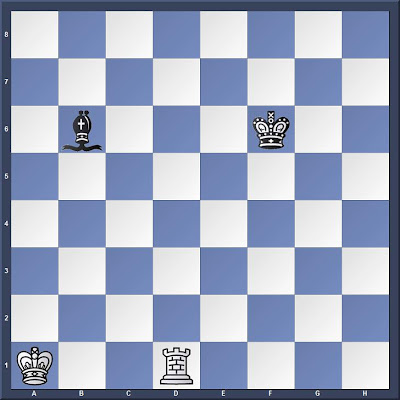Black to move
We need to keep asking our routine questions.
Who is better?
What are the plans for both sides?
When the mind is trained to spot tactics, some positions do not require these questions. It is not always necessary to consider a position deeply when tactics are present. However, young players are too impulsive and must train to slow down. Standing by the demo board in a room full of elementary students, I have fielded many strings of suggestions that seem like random guesses.
Learning to Spot Tactics
I have been working on a new series of worksheets for my young players. Each worksheet consist of six problems on one page. The problems are simple one-move problems with few pieces on the board. Last week, I spent a short time with a player who has just learned the moves. Together, we went through the first test in Bruce Pandolfini, Beginning Chess (1993). This book has three hundred one-move problems, each with ten or fewer pieces on the board. The young student needed some prompting through the first few problems, and then he began to spot tactics. He solved the last three problems in the first test quickly and on his own.
It would be useful to get this book into the hands of each and every young chess player before he or she plays in a tournament. That is not likely. Even if possible, many students will not work through three hundred problems without additional rewards. Getting groups of players to work through six problems in one sitting is much easier. If I make it a game with prizes, perhaps the necessary habit of tactics training will take root.
Repetition of simple ideas and of common patterns is the heart of chess training. Here are my first six problems. White moves first in each.






















No comments:
Post a Comment